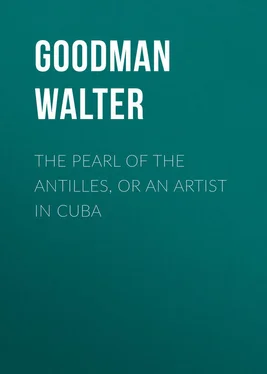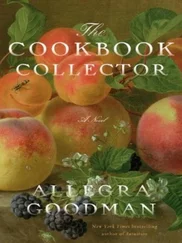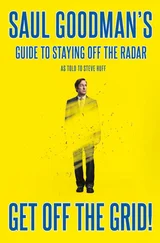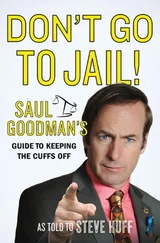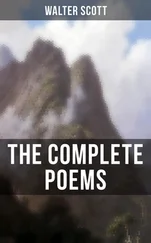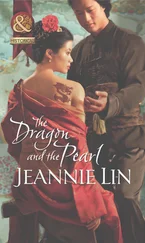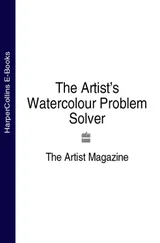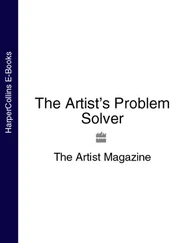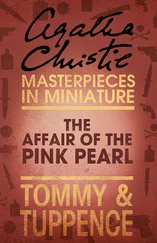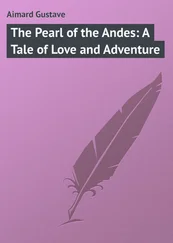Walter Goodman - The Pearl of the Antilles, or An Artist in Cuba
Здесь есть возможность читать онлайн «Walter Goodman - The Pearl of the Antilles, or An Artist in Cuba» — ознакомительный отрывок электронной книги совершенно бесплатно, а после прочтения отрывка купить полную версию. В некоторых случаях можно слушать аудио, скачать через торрент в формате fb2 и присутствует краткое содержание. Жанр: foreign_antique, foreign_prose, Путешествия и география, на английском языке. Описание произведения, (предисловие) а так же отзывы посетителей доступны на портале библиотеки ЛибКат.
- Название:The Pearl of the Antilles, or An Artist in Cuba
- Автор:
- Жанр:
- Год:неизвестен
- ISBN:нет данных
- Рейтинг книги:4 / 5. Голосов: 1
-
Избранное:Добавить в избранное
- Отзывы:
-
Ваша оценка:
- 80
- 1
- 2
- 3
- 4
- 5
The Pearl of the Antilles, or An Artist in Cuba: краткое содержание, описание и аннотация
Предлагаем к чтению аннотацию, описание, краткое содержание или предисловие (зависит от того, что написал сам автор книги «The Pearl of the Antilles, or An Artist in Cuba»). Если вы не нашли необходимую информацию о книге — напишите в комментариях, мы постараемся отыскать её.
The Pearl of the Antilles, or An Artist in Cuba — читать онлайн ознакомительный отрывок
Ниже представлен текст книги, разбитый по страницам. Система сохранения места последней прочитанной страницы, позволяет с удобством читать онлайн бесплатно книгу «The Pearl of the Antilles, or An Artist in Cuba», без необходимости каждый раз заново искать на чём Вы остановились. Поставьте закладку, и сможете в любой момент перейти на страницу, на которой закончили чтение.
Интервал:
Закладка:
The watchman then tells me that Doña Choncha is in league with 'brujas' (witches), and that if I continue to visit at her house I shall do well to take the precautions he has suggested.
Mateo is himself a firm believer in the Black Art, and gives me some interesting particulars respecting a secret society of sorcerers, who hold certain midnight revels in an empty saloon of a house somewhere in the town. There is a kind of freemason mystery attached to their proceedings, and none but members are in the secret. It appears, however, that their dark deeds consist chiefly in a dead-of-night dance around a defunct 'majá' or enchanted snake, by a number of people, most of whom are attired in nature's vestments.
The watchman likewise tells me that the practice of witchcraft in Cuba is sometimes attended with serious and fatal consequences, and that crimes of the worst description are frequently the result of it. An individual unwittingly takes his neighbour's life in obedience to commands from a sanguinary sorcerer, who requires a certain weight of human blood to complete the ingredients of an enchanted preparation. 'Bring me a couple of handfuls of hair, and four ounces of blood from Fulano,' says the weird, who has been applied to for spiritual absolution, 'and I will prepare you a contradaño – a charm – that shall rid you of your evil genius, and help you out of your present difficulty.' Fulano objects to part with his 'personal' property, when the request is made to him in a friendly way; so he gets a hard knock on the head one day, when he least expects it, and if he escapes with his life he is lucky.
Such instances of witchcraft as these, the sereno says, are found only among the coloured population of Cuba, and when discovered the perpetrators of the nefarious acts are brought to justice and severely punished; but belief in necromancy exists even among the more enlightened inhabitants of Cuba, and it is far from uncommon to hear of highly respectable whites taking part in the practice of it.
Mateo then gives me his own personal experiences of the Black Art as a warning against the danger which, he says, will surely threaten me if I continue to visit the tobacconist family.
The watchman assures me that for many long weeks he had laboured under the depressing influence of a spell. The unfortunate occurrence began with an anonymous letter conveying the unwelcome information that a certain enemy of Mateo's was engaged in brewing some dreadful mischief for his especial benefit. In his professional capacity, the watchman has more than one foe in the town, and it is therefore difficult to 'spot,' and afterwards capture, the actual offender. The warning letter, however, admonishes him that so long as he does not walk in a certain locality, no harm to him can possibly accrue. It is not easy for Mateo to avoid the indicated thoroughfare, as it happens to come exactly within our watchman's beat at night; but he surmounts the obstacle at the risk of incurring his employers' displeasure, by exchanging beats with a brother watchman. The irregular act is, however, made known to the authorities, and Mateo is threatened with instant dismissal if he persists in avoiding the street in question. Fortunately, the sereno receives a second missive from the anonymous correspondent, containing the assurance that there is still hope for immediate and radical disenchantment if Mateo will only follow the writer's advice. This consists, first of all, in depositing a piece of coin under the door of his correspondent's habitation. At an early hour, the money will disappear through some unseen agency, and will afterwards be consigned to a disenchanting locality in the Cuban bay. The sereno is next enjoined to examine the lining of his bran-new panama, which he has lately purchased to wear only on festive occasions. If all goes well, he will assuredly discover certain black pins and human hairs crossed, entwined and affixed in a peculiar fashion to the crown of his hat. The same evil omens will likewise appear at the ferule end of his gold-knobbed walking-stick. Satisfied that there is 'no deception,' the proprietor of the enchanted hat and cane wraps up those articles carefully in several folds of paper, according to instructions, and early one Sunday morning deposits the parcel in a certain hole in an undesirable field on the confines of the town.
'When I had done so,' concludes the watchman, pausing to inform the inhabitants that it is three-quarters past midnight and nu-bla-do! – 'when I had done so, I walked without fear along the forbidden street, and I have walked there in safety ever since!'
The watchman enjoins me to be warned by his story, and once more advises me to provide myself with a few contradaños.
'Had I taken the same precautions,' observes Mateo, 'I should have escaped all my troubles.'
'And preserved your panama and gold-headed cane!' I add.
'Past one o'clock and seren-o!' sings the watchman as he takes his leave of me.
My interest in the tobacconist's family is considerably increased by what I have heard, and my visits are none the less frequent because of the friendly admonitions which I have received. I do not provide myself with the talismans which the sereno has recommended; but I watch the old lady's ways more narrowly than I have before done, till I begin at last to detect something like a malignant expression in her shrunken, yellow-brown countenance.
I observe no change in her pretty daughter, though I must confess that in one way, at least, La Perpetua is more 'charming' than ever. The young girl is full of her approaching 'fiesta,' or saint's day, which annual event is to be celebrated by an afternoon ball and early supper at her humble home. The presents she expects to receive in the shape of trays of dulces and confectionary will, she assures me, exceed those of the past fiesta. Perpetua is the acknowledged belle of the 'barrio,' or district, where she resides, and she has many admirers. But unfortunately the young creole is not so white as her fair complexion would lead one to suppose. Don Ramon is undoubtedly a white man, but his wife belongs to the mulatto tribe, and Perpetua's origin is unquestionably obscure. Still Doña Choncha has great hopes that her pretty daughter will command a white alliance among her husband's friends in spite of this drawback, and it is whispered that the ambitious old dame has her eye upon more than one eligible suitor for her child's whitey-brown hand. Mateo, the watchman – ever hard on Doña Choncha – declares that it is her 'evil eye' that is being exercised in Perpetua's behalf; but I heed him not, though I am now more than ever cautious in my behaviour at the tobacconist's.
Whatever truth there may be in the watchman's assertion that I am the object of enchantment, at present I have received no practical evidence of it. When I probe Perpetua privately on the subject, I find that she has little to tell, except that her mother is in the habit of visiting a locality in the town unknown to Perpetua and Don Ramon, and that, upon one occasion, she administered a harmless drug to her daughter, assuring her that it was a protection against cholera.
As for Don Ramon – that good-natured gentleman is altogether a disbeliever in witchcraft, and though he admits that the art is popular among a certain class in Cuba, he is of opinion that the Cuban bruja, or witch, is simply a high order of gipsy, whose chief object is pecuniary gain. The government of the country, with its accustomed inertness, has not yet established a law for the suppression of this evil; 'and so,' says the tobacconist, 'sorcery flourishes, and the brujas prosper.'
I am beginning to abandon all hope of obtaining La Perpetua for a model, when one day I receive an anonymous letter, the handwriting and diction of which seem to be the production of an uninstructed Ethiop. The writer assures me that somebody or other is at present engaged in the useful occupation of working for my complete overthrow and subjugation, and that if I require further particulars on the subject I may easily obtain them for the small consideration of a 'punctured peseta' (a coin with a 'lucky' hole in it).
Читать дальшеИнтервал:
Закладка:
Похожие книги на «The Pearl of the Antilles, or An Artist in Cuba»
Представляем Вашему вниманию похожие книги на «The Pearl of the Antilles, or An Artist in Cuba» списком для выбора. Мы отобрали схожую по названию и смыслу литературу в надежде предоставить читателям больше вариантов отыскать новые, интересные, ещё непрочитанные произведения.
Обсуждение, отзывы о книге «The Pearl of the Antilles, or An Artist in Cuba» и просто собственные мнения читателей. Оставьте ваши комментарии, напишите, что Вы думаете о произведении, его смысле или главных героях. Укажите что конкретно понравилось, а что нет, и почему Вы так считаете.
